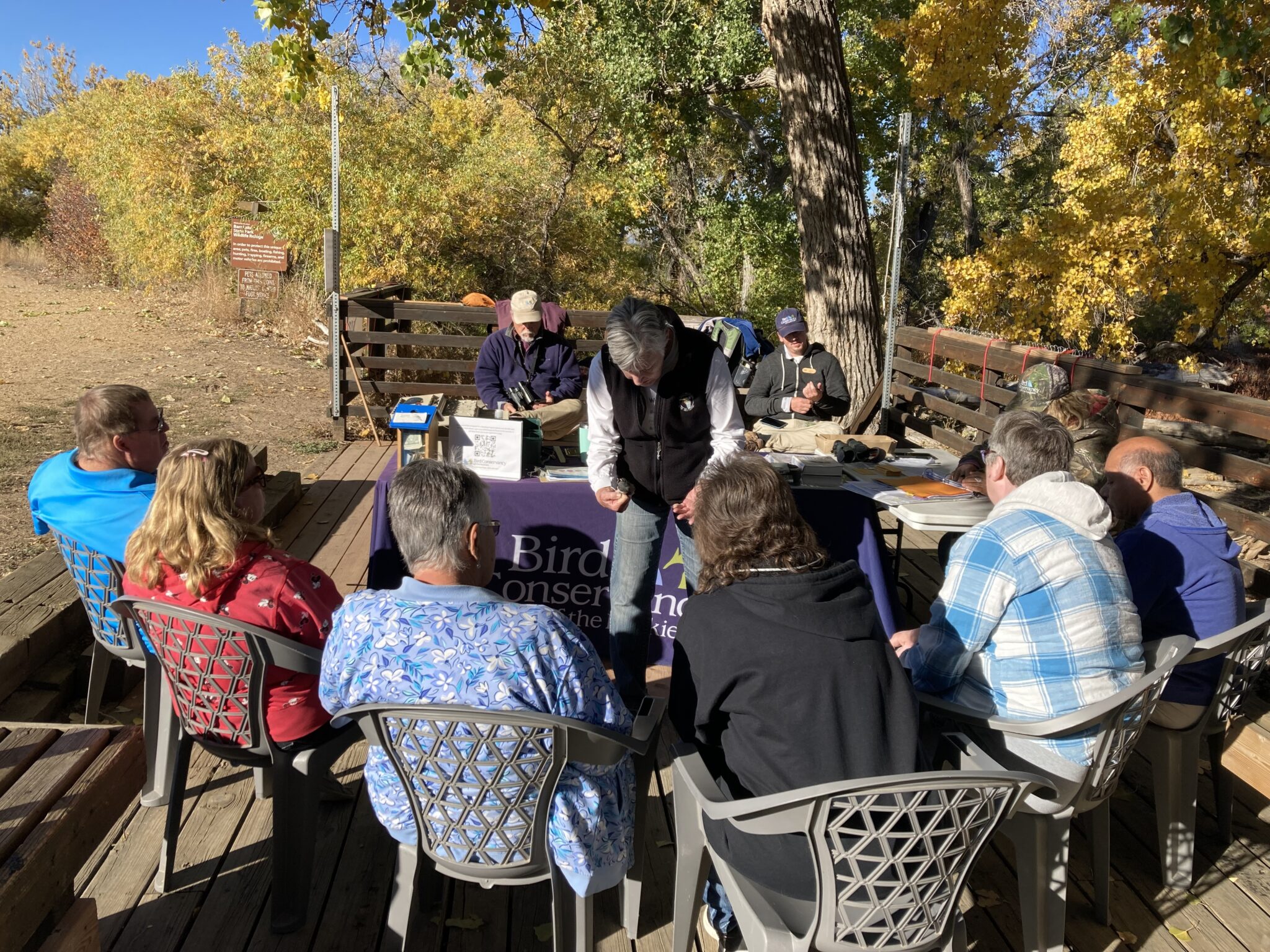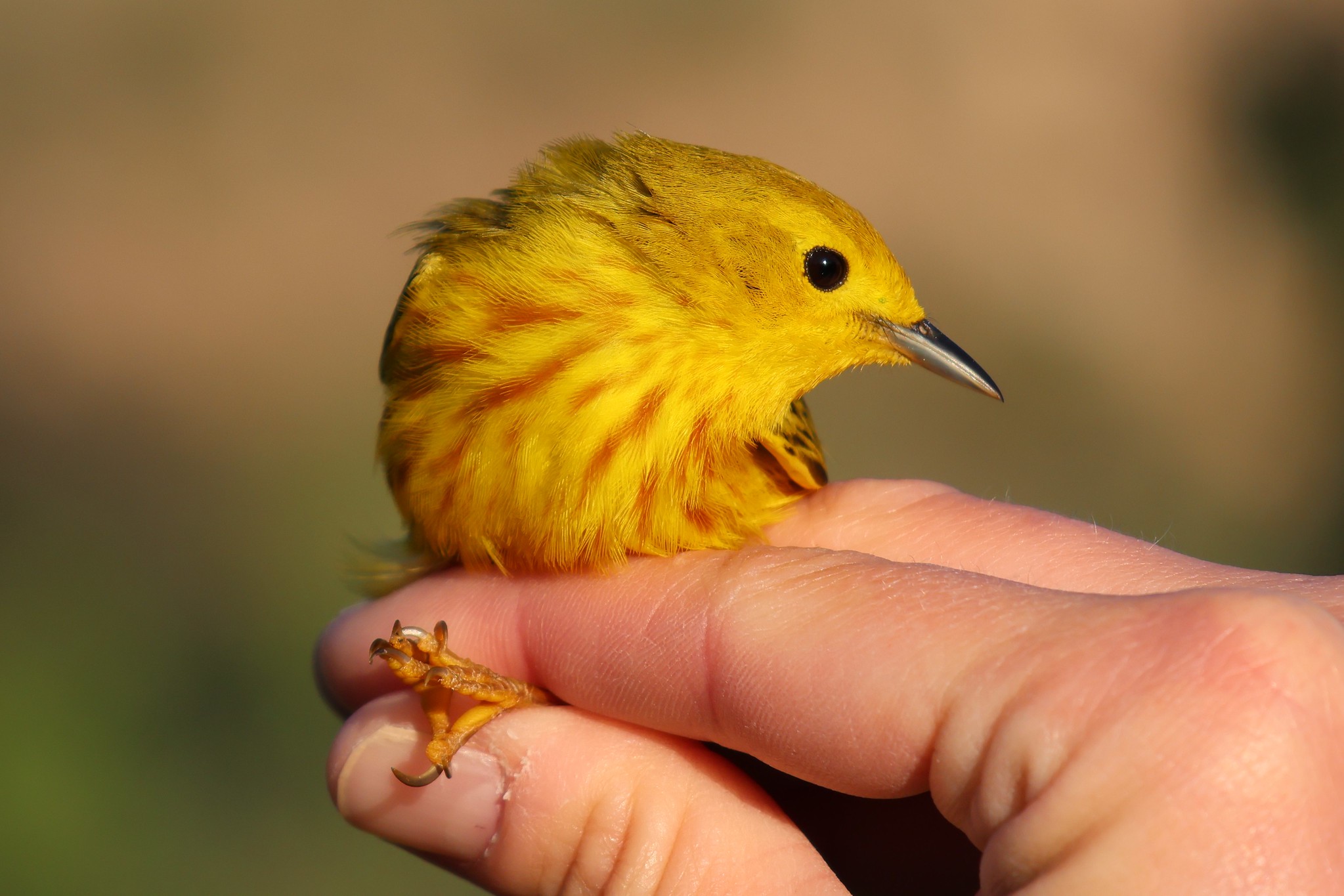Visit our Bird Banding Station located at Pineridge Natural Area this fall for an up close and personal experience with birds! You will have a unique opportunity to experience science in action and observe a wildlife biologist banding and collecting important scientific data on live, migrating birds. You will also learn about specialized bird adaptations and behavior, annual migration, crucial habitat requirements, and key conservation issues. Bird banding data increases our knowledge and understanding of birds and is often utilized in management and conservation projects!
The Pineridge Banding Station is open from September 8th – October 6th, 2023.
One hour programs are available Tuesday – Friday from 7:30-8:30 a.m. and Saturdays from 7:30-8:30 a.m. and 8:30 – 9:30 a.m. (closed Sunday & Mondays).
The programs are provided at no cost, but registration is required!

Schedule is weather permitting. Station is closed during precipitation or high winds, and may close early during very hot weather and open later if very cold. Parking closest to the Banding Station is at Maxwell Natural Area (3502 CR 42C Fort Collins, CO). From there, access to the Station requires a very short walk across a road, then down and up a small hill on a packed dirt trail. Please note, this location is not easily wheelchair accessible.
Please note: Please check the website below for up to date closures of Pineridge Natural Area. If Pineridge Natural Area is closed, the banding station is closed as well.
https://www.fcgov.com/naturalareas/status
For more information: Sarah Doxon at (303) 659-4348 x 53 or [email protected]




